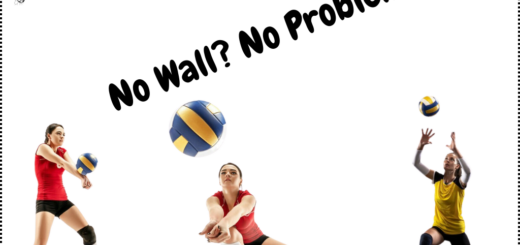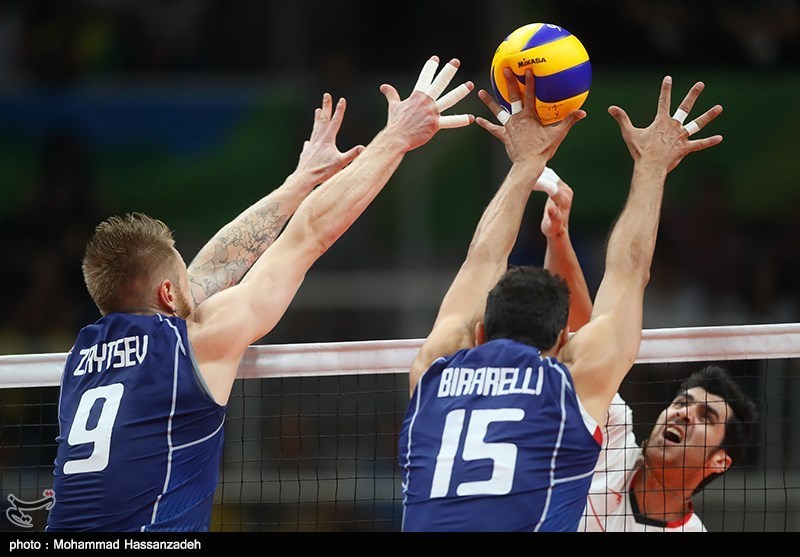How to Use a Volleyball Rebounder?

A volleyball rebounder is a training tool designed to help volleyball players improve their ball control, passing, setting, spiking, and other skills. It allows players to practice independently by returning the ball to them after each hit.
But the common error which I have seen rebounder players making is to use it in an incorrect fashion, thus making the whole exercise redundant.
How to Use a Volleyball Rebounder?
Here’s a step-by-step guide on how to use a volleyball rebounder:
Setting the rebounder
Almost all the volleyball rebounders are plug-and-play, meaning you just have to unfold them in order to start using them.
Most rebounders will consist of a net or surface that bounces the ball back to the player and a frame to hold it in place.
Now, you have to position the rebounder.
You will preferably need a large open space where there’s no risk of the ball hitting other objects or people.
If you have a backyard, you are good to go.
Otherwise, any place where you can freely move and have no fragile objects nearby will be fine.
Getting in Shape
Stand a few feet away from the rebounder. There is no one-fit-all rule here.
While your exact position depends upon your personal preference, the type of drill you are doing and the angle at which the rebounder is adjusted also matter a lot.

Personally, I prefer standing 4 feet when the rebounder is facing upward and going almost half a foot back whenever I move the rebounder one frame low towards the floor.
This is because the lower the face of the rebounder, the faster the ball will come towards you.
But you can always increase the difficulty level by standing closer to the rebounder, just in case you want to get a taste of the intense volleyball games.
Practicing Skills
Now comes the most interesting part: the skill that you want to sharpen with the help of the rebounder.
Remember, a rebounder can help you with all the volleyball skills, including passing, setting and spiking. It’s up to you how you set it up and use it. Here is what you need to do for each skill.
Passing
Toss the ball up and pass (bump) it into the rebounder. It is as simple as that. Isn’t it?
But here lies a complication that will literally make or break your experience with the rebounder.
If you have a good quality rebounder, it will offer the same amount of rebounding from all of its surfaces.
But if you compromise on the quality, you will get the most rebounding from the centre, and it will reduce whenever you deviate from that magical centre point.
That is why aiming for the right point based on the quality of the rebounder is important.
Once you hit it, you will need to adjust your footwork and position to receive the ball as it comes back.
Setting
Setting is yet another important aspect of volleyball that players aspire to practice with the rebounder.
To do this, toss the ball up and set it into the rebounder. Work on hand positioning and control. The ball should come back in an arc, allowing you to set it again.
But once you set it, it’s important that you follow up on the ball and smash it hard on the rebounder so that it can come to you again, and you set it up.
Serving
Serving is one thing that each and every player has to do due to the rotation policies of the game. That is why this is the most lethal weapon in the arsenal of any volleyball player.
To practice this skill, you will need to stand quite far from the rebounder.
I will recommend standing at least 10 to 12 feet away, facing the rebounder. And then serve the ball to the rebounder.
Serve the ball into the rebounder and move to position yourself for the return.
Receive the ball, make a pass, set it and then smash before continuing for the next round.
Spiking
Toss the ball up, approach it, and spike it into the rebounder. Adjust your positioning to handle the returned ball, either by passing or setting.
Adjusting the Rebounder
You can adjust the angle of the rebounder to change the trajectory of the returned ball.
This can help simulate different game scenarios and challenges.
Some rebounders have adjustable tension, allowing you to change the force of the return. If this option is available to you, don’t forget to utilize it, especially when you are practising serve and smashing.
Safety Precautions While Using the Volleyball Rebounder
While you practice with the volleyball rebounder, there are plenty of safety precautions, including:
- Ensure the rebounder is securely anchored to prevent it from tipping over.
- Stay aware of your surroundings to avoid tripping or running into objects.
- Use appropriate protective gear if needed, especially when practising more aggressive shots.
Regular Maintenance of the Rebounder
All the magic of practising the game with the rebounder is only possible if you maintain it properly.
This you can do by:
- Checking the rebounder’s netting or surface for any wear or tear before each practice session.
- Tightening any loose screws or bolts.
- Cleaning the netting or surface as necessary.
Final Words
It’s beneficial to have a fellow player watch you sometimes. They can provide feedback on your technique and form. Record yourself using the rebounder. This can help you see any mistakes or areas of improvement in your form or technique.
Using a volleyball rebounder consistently can significantly improve your ball-handling skills. Practice regularly and with purpose, focusing on technique and form to get the most out of your sessions.
But don’t forget that volleyball rebounders are not the only thing that can help you perfecting the skill. There are many beginner-friendly volleyball drills as well as fun volleyball games that will equally help in getting in shape.

Ahmed is the founder of Ball and Net Sports, a platform where he writes about volleyball.
As a professional volleyball player who has participated in various national and international level volleyball competitions, he loves to teach other volleyball enthusiasts about the game.
He is now a professional volleyball coach who organizes volleyball camps and social events for talent hunting for top volleyball teams.
As a volleyball talent-hunting specialist, he loves to teach people how they can make their game better in the fast-paced volleyball environment where it is extremely difficult to get quality content free of cost.



